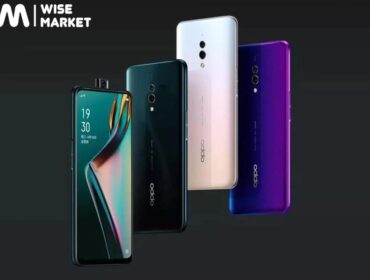What is a Brand Identity?
A brand identity is the visual and emotional representation of a business. It encompasses everything from the company’s name, logo, color scheme, typography, and messaging, to its mission statement and overall personality. A strong brand identity can help a business to establish trust, build loyalty, and differentiate itself from competitors.
Why is a Strong Brand Identity Important?
A strong brand identity is important for several reasons. Firstly, it helps to establish brand recognition. Consistent use of visual elements, such as a logo or color scheme, can help customers to identify a business quickly and easily. This is particularly important in today’s fast-paced digital environment, where customers are inundated with advertising and marketing messages.
Secondly, a strong brand identity helps to build trust and loyalty. When a business has a clear and consistent brand identity, customers are more likely to trust it and feel connected to it emotionally. This can lead to increased customer loyalty, repeat business, and word-of-mouth referrals.
Finally, a strong brand identity can help a business to differentiate itself from competitors. By clearly defining what sets your business apart from others in your industry, you can create a unique selling proposition that resonates with your target audience.
How to Create a Strong Brand Identity
Creating a strong brand identity requires careful planning and execution. Here are some steps to help you develop a strong brand identity for your business:
- Define Your Brand Personality: Your brand personality is the emotional and human characteristics that you want your brand to be associated with. For example, your brand personality might be fun, quirky, and irreverent, or it might be serious, professional, and trustworthy.
- Develop a Brand Voice: Your brand voice is the tone and style of your messaging. It should reflect your brand personality and be consistent across all marketing channels.
- Create a Brand Visual Identity: Your brand visual identity includes elements such as your logo, color scheme, typography, and imagery. It should be consistent across all marketing materials and reflect your brand personality.
- Craft a Brand Story: Your brand story should communicate your brand values, mission, and vision in a compelling way. It should also highlight what sets your business apart from competitors.
- Conduct Market Research: Conducting market research can help you to identify your target audience and what they are looking for in a brand. This can inform your brand messaging and visual identity.
How Messaging Fits into Your Brand Identity
Messaging is an essential component of your brand identity. Your messaging should be consistent with your brand personality, voice, and visual identity. It should also communicate your value proposition in a way that resonates with your target audience.
Effective messaging should be clear, concise, and memorable. It should highlight the unique benefits of your product or service and differentiate your brand from competitors. Additionally, messaging should be tailored to your target audience, addressing their specific pain points and interests.
A strong messaging strategy can help a business to establish credibility, build trust, and drive customer engagement. It can also serve as a foundation for other marketing strategies, such as content marketing, social media marketing, and email marketing.
Tips for Developing Strong Brand Messaging
Here are some additional tips for developing strong brand messaging:
- Identify Your Unique Selling Proposition: Your unique selling proposition (USP) is what sets your business apart from competitors. It should be a clear and concise statement that communicates the unique benefits of your product or service.
- Speak to Your Target Audience: Your messaging should be tailored to your target audience. Consider their pain points, interests, and values when crafting your messaging. Use language and tone that resonates with them and speaks to their needs.
- Use Emotional Appeal: Emotions can be a powerful motivator for consumer behavior. Consider using emotional appeal in your messaging to connect with your target audience on a deeper level. However, be careful not to overdo it and stay true to your brand personality.
- Be Consistent: Consistency is key when it comes to brand messaging. Use the same messaging across all marketing channels and ensure that it is consistent with your brand personality, voice, and visual identity.
- Focus on Benefits, Not Features: Your messaging should focus on the benefits of your product or service, not just its features. Highlight how your product or service solves a problem for your target audience or makes their lives easier.
- Test and Iterate: Don’t be afraid to test different messaging strategies and iterate based on what resonates with your target audience. Use data and analytics to measure the effectiveness of your messaging and make adjustments as needed.
Brand Voice:
Your brand voice is the tone and style in which you communicate with your target audience. It should be consistent across all marketing channels and aligned with your brand personality and values. Consider your brand voice when crafting your messaging to ensure that it resonates with your target audience and supports your brand identity.
Elevator Pitch: An elevator pitch is a brief statement that communicates the essence of your brand in a concise and compelling manner. It should be easy to remember and communicate your unique selling proposition. Consider creating an elevator pitch for your brand and using it in your messaging across all marketing channels.
Customer Feedback: Customer feedback can provide valuable insights into your brand messaging. Consider gathering feedback from your target audience on your messaging, and use this feedback to refine and optimize your messaging to better resonate with your audience.
Brand Story: Your brand story is the narrative that defines your brand and its purpose. It can be a powerful way to connect with your target audience and convey your brand messaging. Consider using your brand story in your messaging to create an emotional connection with your target audience.
Messaging Framework: A messaging framework is a structured approach to crafting brand messaging. It can help ensure consistency and clarity across all marketing channels. Consider developing a messaging framework for your brand, including key messaging points, tone, and voice.
Collaborate with Influencers: Collaborating with influencers can be an effective way to amplify your brand messaging and reach new audiences. Consider identifying influencers who align with your brand values and messaging and collaborating with them to promote your brand.
Use Data to Optimize: Use data and analytics to measure the effectiveness of your messaging and optimize it over time. Consider using A/B testing to compare different messaging strategies and identify the most effective approach.
Stay Current: Stay up to date with industry trends and changes in your target audience’s preferences and behaviors. Consider how these changes may impact your brand messaging and adjust your approach accordingly.











